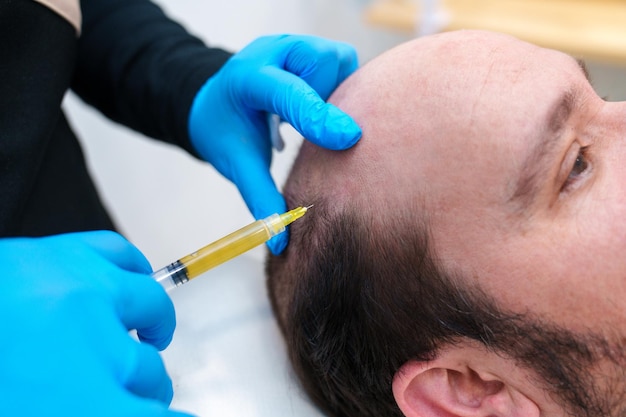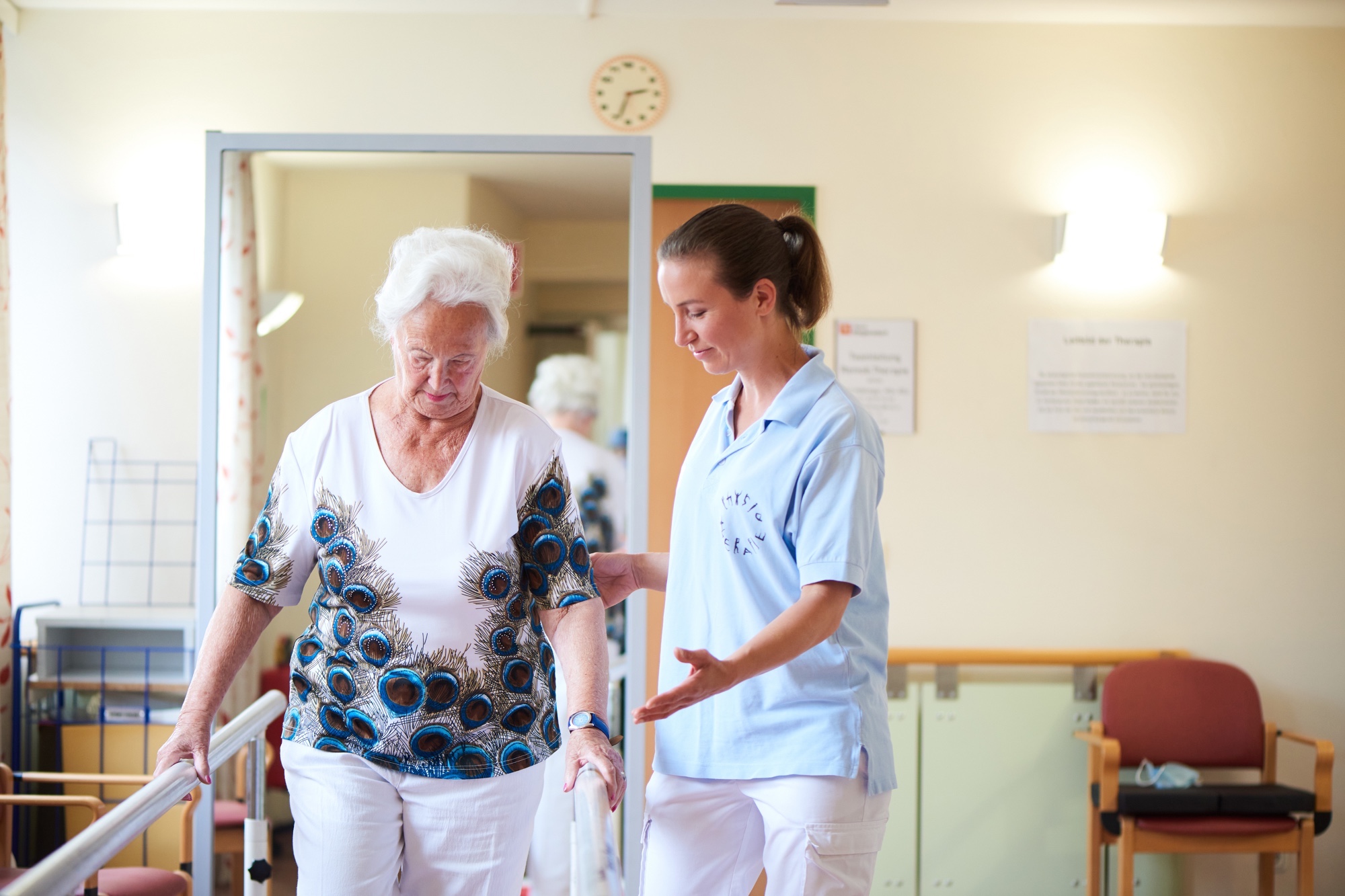Alopecia, an autoimmune condition characterized by hair loss, can significantly impact self-esteem and emotional well-being. For those seeking treatment options, Platelet-Rich Plasma (PRP) therapy is gaining attention as a promising solution. This guide will explore what PRP In Dubai is, how it works, its benefits, potential risks, and what to expect during the treatment process.
Understanding PRP Therapy:
PRP therapy involves using a patient’s own blood to promote hair growth. The process begins with a simple blood draw, which is then processed through centrifugation to separate the platelets from the red blood cells. The resulting PRP contains a high concentration of growth factors and proteins that can stimulate hair follicles and promote healing.
The Science Behind PRP
Platelets play a crucial role in the body’s healing processes. They contain growth factors that can stimulate tissue repair and regeneration. In the context of hair loss, these growth factors can help rejuvenate hair follicles, potentially leading to increased hair density and improved hair health.
Benefits of PRP Therapy for Alopecia:
- Natural Treatment: Since PRP uses the patient’s own blood, the risk of allergic reactions or complications from foreign substances is minimized.
- Non-Surgical: PRP therapy is a minimally invasive procedure, which means there’s no need for extensive recovery time or surgical risks associated with hair transplants.
- Promotes Hair Growth: Many patients report positive outcomes, including increased hair thickness and growth, especially when combined with other treatments.
- Quick Procedure: A typical PRP session lasts about 30 to 60 minutes, making it a convenient option for those with busy schedules.
- Minimal Downtime: Most individuals can resume their daily activities immediately after the procedure, with only minor side effects.
Who Can Benefit from PRP Therapy?
PRP therapy is particularly beneficial for individuals with:
- Androgenetic Alopecia: Commonly known as male or female pattern baldness, this condition can be effectively treated with PRP.
- Alopecia Areata: This autoimmune condition leads to patchy hair loss. PRP may help stimulate hair regrowth in affected areas.
- Telogen Effluvium: Often triggered by stress or hormonal changes, this temporary hair loss condition may respond well to PRP therapy.
However, it’s essential to consult with a healthcare provider to determine if PRP therapy is suitable for your specific type of alopecia.
The PRP Procedure: What to Expect
Initial Consultation
Before undergoing PRP therapy, a thorough consultation with a qualified dermatologist or healthcare provider is essential. During this appointment, the provider will:
- Assess your medical history and hair loss condition.
- Discuss your goals and expectations for treatment.
- Explain the PRP procedure and answer any questions you may have.
The PRP Process
- Blood Draw: A small amount of blood (typically around 10-20 mL) is drawn from your arm.
- Centrifugation: The blood is placed in a centrifuge, which spins at high speeds to separate the components. This process isolates the platelet-rich plasma.
- Injection: The PRP is then injected into the scalp at the areas experiencing hair loss. Multiple injections may be administered during a single session.
- Post-Treatment Care: After the procedure, patients are usually advised to avoid strenuous activities, excessive sun exposure, and hair treatments for a short period.
Treatment Schedule
Most patients require multiple sessions for optimal results. A typical treatment schedule involves:
- Initial Sessions: Usually, three to four sessions spaced about four to six weeks apart.
- Maintenance Sessions: After the initial treatment, maintenance sessions may be recommended every 4-6 months to sustain results.
Potential Risks and Side Effects:
While PRP therapy is generally safe, some individuals may experience mild side effects, including:
- Pain or Discomfort: Some discomfort at the injection sites is common but typically resolves quickly.
- Swelling or Redness: Temporary swelling or redness may occur, usually subsiding within a few hours to a few days.
- Infection: Although rare, there’s a slight risk of infection at the injection site.
Discussing these potential risks with your healthcare provider can help set realistic expectations.
Emotional Well-Being and Support:
Alopecia can have profound emotional effects, leading to feelings of anxiety, depression, or social withdrawal. It’s crucial to address these emotional aspects during treatment:
- Support Groups: Joining support groups or online communities can provide a sense of belonging and understanding.
- Counseling: Speaking with a mental health professional can help individuals cope with the emotional challenges of hair loss.
Understanding alopecia and its treatment options can empower individuals. Knowledge about the condition can alleviate fears and uncertainties, enabling patients to make informed decisions regarding their care.
Lifestyle Modifications
In addition to PRP therapy, certain lifestyle changes can support hair health:
- Nutrition: A balanced diet rich in vitamins and minerals, particularly B vitamins, iron, and zinc, can promote hair growth. Foods such as leafy greens, nuts, seeds, and lean proteins are beneficial.
- Hydration: Staying hydrated is essential for overall health and can positively affect hair follicles.
- Stress Management: Since stress can exacerbate hair loss, incorporating relaxation techniques such as yoga, meditation, or deep-breathing exercises can be beneficial.
- Gentle Hair Care: Avoiding harsh hair treatments and minimizing heat styling can help protect existing hair and promote healthier growth.
Ongoing Research and Future Directions:
PRP therapy is a rapidly evolving field, and ongoing research continues to explore its efficacy and potential applications. Recent studies have shown promising results in various types of hair loss, and researchers are investigating ways to enhance PRP formulations, such as combining them with other treatments like microneedling or stem cell therapy.
Combination Treatments
Combining PRP with other therapies may yield better results for some individuals. For example, using PRP in conjunction with topical minoxidil or oral medications can enhance overall effectiveness. Discussing combination strategies with your healthcare provider can help tailor a treatment plan to your specific needs.
Future Innovations
As the field of regenerative medicine grows, new techniques and technologies may emerge to improve the efficacy of PRP therapy. Innovations such as advanced centrifugation methods or the incorporation of additional growth factors could potentially enhance hair restoration outcomes.
What to Consider Before Starting PRP Therapy:
Before committing to PRP therapy, consider the following factors:
- Consultation: Ensure you consult with a qualified healthcare provider who specializes in hair restoration. They can provide personalized recommendations based on your specific condition.
- Realistic Expectations: While many patients experience positive results, it’s important to have realistic expectations. PRP therapy may not work for everyone, and results can vary based on individual factors.
- Cost: PRP therapy can be an investment, as it typically isn’t covered by insurance. Understanding the financial implications and discussing payment options with your provider is essential.
- Commitment to Treatment: PRP therapy often requires multiple sessions and ongoing maintenance. Be prepared for a long-term commitment to achieve the best results.
Conclusion!
PRP therapy offers a promising avenue for individuals with alopecia, providing a natural, non-surgical option for hair restoration. By harnessing the body’s healing properties, PRP can stimulate hair growth and improve overall hair health. However, it’s essential to approach treatment with realistic expectations and a commitment to ongoing care.
As you consider PRP therapy, remember to prioritize your emotional well-being and seek support when needed. With the right approach and a comprehensive treatment plan, it’s possible to navigate the challenges of alopecia and regain not only hair health but also confidence and peace of mind. Always consult with a qualified healthcare provider to ensure that PRP therapy is the right choice for your individual needs.



